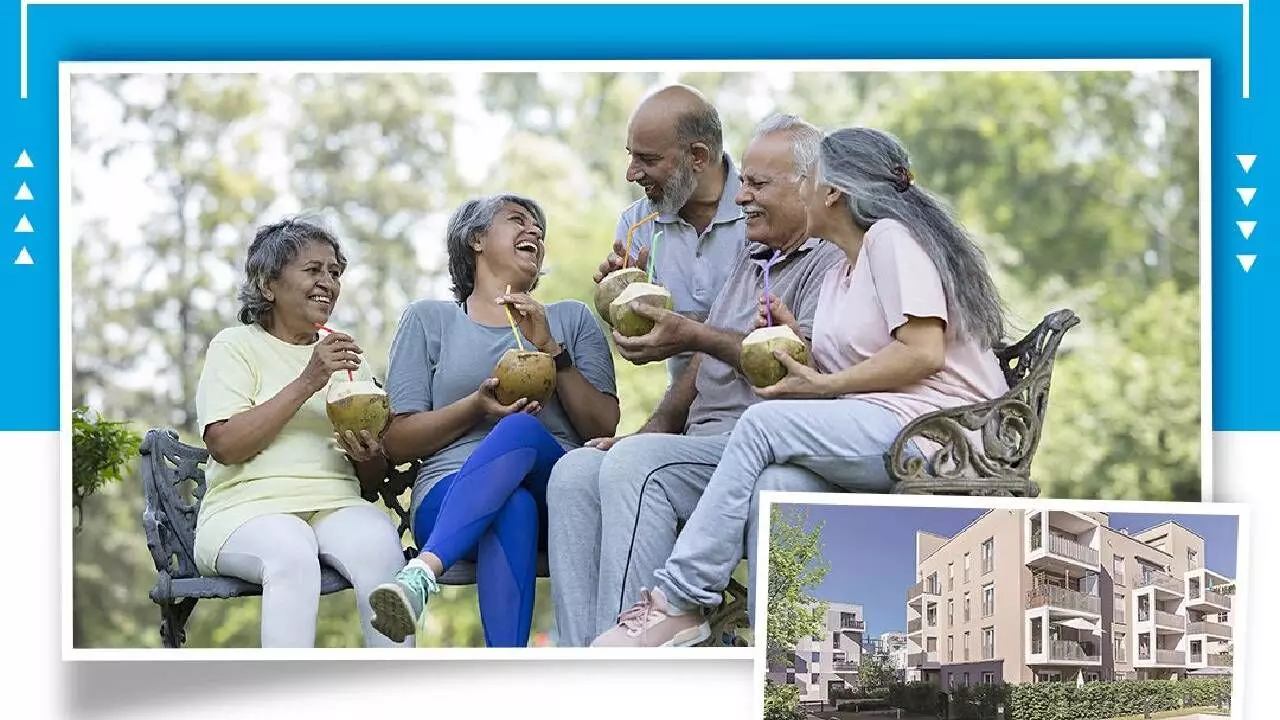The future of senior care: A look at India’s evolving assisted living sector
India’s aging population is driving a surge in demand for assisted living facilities. Factors like longer lifespans, changing family structures, and urbanization are contributing to this trend
image for illustrative purpose

India is on the cusp of a demographic transformation, with the senior population projected to rise to 20 per cent by 2050. This shift is paving the way for the rapid evolution of the assisted living sector, a segment that remains nascent yet promising. As the country grapples with increasing urbanisation, nuclear family structures and life expectancies, the need for innovative, sustainable and inclusive assisted living solutions has never been more pronounced.
A growing demand for specialised care
The demand for assisted living in India is fuelled by the dual forces of an aging population and the fragmentation of traditional family support systems. Senior citizens today are living longer, healthier lives, but they also face chronic health conditions and the challenges of loneliness. These factors, combined with the growing awareness of the benefits of assisted living, are driving a cultural shift in how retirement and elder care are perceived.
Modern assisted living communities aim to provide a holistic environment that balances medical care with social and recreational opportunities. The post-pandemic era has underscored the importance of safety, health, and well-being, accelerating the transition toward professionally managed facilities designed for senior citizens.
Urbanisation and location dynamics
The geographic distribution of assisted living facilities is undergoing a transformation. Southern cities such as Bengaluru, Chennai, and Hyderabad dominate the market, thanks to their robust healthcare infrastructure and favourable climates. Northern and Western regions, including Delhi-NCR, Pune, and Mumbai, are also emerging as attractive hubs for assisted living developments, driven by urbanisation and higher income levels. Strategic locations near healthcare hubs, airports, and recreational areas are critical in attracting residents. These placements enhance accessibility for families and provide senior citizens with opportunities for an enriched lifestyle, integrating urban conveniences with serene environments.
Biophilic and sustainable design principles
One of the most significant trends shaping the assisted living sector is the adoption of biophilic design principles. These designs prioritize natural light, green spaces, and a connection to nature, promoting mental and physical well-being. Developers are increasingly integrating energy-efficient technologies, rainwater harvesting, and sustainable materials to create eco-friendly environments that align with the preferences of senior citizens.
Sustainability is no longer an optional feature but a core requirement. Assisted living communities are being designed to minimise carbon footprints while fostering a sense of community and connectedness among residents. These principles are particularly vital as they address the dual needs of environmental responsibility and enhanced quality of life.
Technological integration: The game-changer
Technology is redefining assisted living, bringing innovations that enhance safety, convenience, and health monitoring. Smart home solutions equipped with sensors and voice-controlled devices allow seniors to maintain independence while ensuring their safety. These systems can monitor movement, detect falls, and send alerts to caregivers in real-time.
Wearable health devices are another revolutionary addition. These devices track vital signs, ensuring timely medical interventions and providing peace of mind to both residents and their families. Assisted living facilities are also incorporating telemedicine and digital platforms for virtual consultations, enabling seamless healthcare access regardless of location.
Artificial intelligence and robotics are gradually finding their place in the sector. From robotic assistants aiding with daily chores to AI-driven analytics predicting healthcare needs, these technologies promise to transform the way assisted living is experienced and managed.
Personalisation and community engagement
Today, senior citizens in India represent a more dynamic and diverse demographic than ever before. They value personalized care and are willing to pay a premium for facilities that cater to their unique preferences. Assisted living communities are responding with customized wellness programs, dietary plans and curated lifestyles that reflect this shifting paradigm. Social engagement is another cornerstone of modern assisted living. Facilities are being designed as inclusive spaces that encourage interaction and foster a sense of belonging. Whether through cultural events, fitness classes, or hobby clubs, the focus is on creating vibrant communities where seniors can thrive. The rising trend of early retirees seeking active lifestyles offers an additional segment for developers to tap into. Partnerships between healthcare providers, developers, and technology companies can accelerate the growth of the sector.
A bright tomorrow
The assisted living sector in India is on the brink of a revolution. Driven by changing demographics, technological advancements, and evolving societal attitudes, it is poised to become a vital component of the nation’s housing and healthcare ecosystem. By embracing innovation and sustainability, assisted living communities have the potential to redefine how aging is experienced, offering senior citizens not just a place to live but a place to thrive. As the industry matures, it holds the promise of transforming India into a global leader in elderly care, setting benchmarks for quality, inclusivity, and innovation in the years to come.

